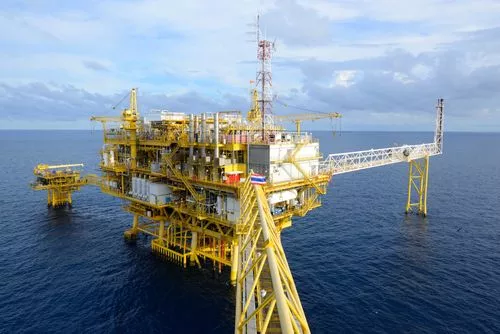On the night of April 20th, 2010, a semi-submersible oil rig called the Deepwater Horizon suffered a massive blowout. Within a matter of minutes, flames engulfed the structure, which sat just 40 miles off the coast of Louisiana.
By the time authorities could assess the damage, the accident had killed 11 workers and sent oil gushing out into the Gulf of Mexico at a rate of tens of thousands of barrels per day. It was a devastating drilling rig accident and the single worst environmental disaster in U.S. history.
A Dangerous Job in a Dangerous Business
The Deepwater Horizon explosion may be the most notorious drilling rig disasters in recent memory, but it’s hardly the only one. The 126 people who lived and worked on the drilling rig were like many others around the globe who risk their lives to satisfy the world’s demand for oil.
Every day they show up to work, they face the prospect of explosions, fires, and other catastrophic accidents. Over the past two decades, the Houston work injury lawyers at Johnson Garcia LLP have encountered many hardworking people who have suffered injuries as a result of such accidents. Their stories, and the reasons behind their accidents, may help others avoid or, at least, prepare for a similar fate.
At a Glance: Common Types of Drilling Rig Disasters:
- Fires: Drilling rigs and production platforms are rife with gases and other flammable substances. One spark in the wrong place could start a devastating fire.
- Blowouts: A blowout occurs when underground pressure counteracts the force of gravity and natural gases are released upward.
- Capsizing: Like all vessels designed to float on the surface, drilling platforms face the risk of capsizing.
At a Glance: The Three Worst Drilling Rig Disasters in History
#1
Rig: The Piper Alpha
Location: The North Sea, UK
Date: July 6, 1988
People Killed: 167
Cause: Explosion due to human error
#2
Rig: The Alexander L. Kielland
Location: Ekofisk Oil Field, Norway
Date: March 27, 1980
People Killed: 123
Cause: Capsize due to structural failure
#3
Rig: The Seacrest Drillship
Location: South China Sea, Thailand
Date: November 3, 1989
People Killed: 91
Cause: Capsize due to natural disaster
Negligence Remains the Biggest Culprit
Why do accidents happen? Who or what is to blame, and what can workers do to protect themselves and their families?
An oil rig explosion can be as devastating as any natural disaster. The difference is that most drilling accidents and the drilling rig deaths they cause are avoidable. In far too many cases, negligence is to blame.
Negligence comes in many forms—failure to conduct regular maintenance, failure to use the proper safety equipment, failure to retire old or faulty machinery, failure to interpret data correctly, failure to appreciate the potential dangers, and failure to train crew members sufficiently.
Worst-case scenarios occur when negligence operates at many levels. Take the case of the Deepwater Horizon: According to the official BP report on the incident, the blowout occurred after eight separate safety systems failed. Why did they fail, and how did so many systems fail at once? The answer reads like a laundry list of common but preventable mistakes. They include:
Inadequate Training
Inadequate training is a safety hazard. When workers aren’t well-versed in proper procedure, when they don’t know the dangers that surround them and how to mitigate the risks, they’re left vulnerable to disasters such as blowouts and fires.
A single spark that lands near a gas or fuel source, for example, can cause a deadly fire. Such a safety lapse occurred on November 16, 2012, on a Black Elk Energy production platform in the Gulf of Mexico, when a worker tried to weld a pipe near an oil line.
At many points preceding the Deepwater Horizon disaster, most public reports have concluded that the crew could have averted an explosion. Unfortunately, investigators determined that they misinterpreted a pressure test, failed to notice the leak, and chose not to divert dangerous gas away from the rig.
Defective Equipment
Malfunctioning equipment puts lives at risk. It’s the job of the oil company to ensure that every piece of machinery is in working order. They do that by routinely inspecting and repairing every mechanical feature on an oil rig.
The thing about inspections and repairs is that they take time, and time is money. Many oil companies would prefer to put profits ahead of safety. They would prefer to keep oil rigs operating around the clock. Instead of waiting for delays, they allow faulty equipment to remain in operation. In the vast majority of cases, nothing happens, but it only takes one malfunction to cause death and destruction.
According to the various public reports, the Deepwater Horizon blowout might never have happened, and might never have become so catastrophic if it hadn’t been for a series of mechanical failures. At least three pieces of equipment on the semi-submersible rig appear to have failed to work properly. Aside from the faulty cement plug, there were two valve failures and one gas alarm failure.
Even worse, the failure of a cement plug to seal a well was a direct cause of the explosion that led to the deaths of 11 workers. Before the accident, the crew tried to seal a borehole with cement. According to BP’s official investigation, the cement formulation was inadequate. Whether that was the fault of poor quality materials, poor workmanship, or poor planning, the result was the same.
Poor Maintenance
A drilling rig or platform is home to a maze of complex equipment. Each piece requires regular maintenance in order to work the way it was designed. Sometimes oil and/or drilling rig companies ignore maintenance reports for economic motives. In other cases, maintenance gets overlooked altogether. Such oversight is one of the major causes of malfunctioning equipment, which is one of the major culprits behind drilling rig disasters.
Even the simplest technology needs upkeep. Take batteries, which must be replaced regularly. If it hadn’t been for a dead battery and a faulty switch, the blowout preventer on the Deepwater Horizon may have been able to shut the rig’s valves off. In other words, the nation’s largest environmental disaster might have been averted if only a battery had been working according to the conclusions reached by various reports.
Unsafe Procedures
In July 1988, the Piper Alpha platform in the North Sea exploded, killing 165 crewmembers and two nearby workers. It was the single deadliest drilling rig accident in recorded history. Ironically, it occurred as a result of routine maintenance repairs, not in spite of them. This time, the culprit was poor safety procedures.
The explosion happened after a maintenance crew failed to inform a night crew about their activities—specifically, the removal of a safety valve on one of the pumps. When the night crew came on the scene, they turned on an alternate pump, and the temporary seal couldn’t handle the pressure. In other words, a simple communication error led to the worst oil rig accident in the world.
Natural Disasters
Natural disasters also lead to their fair share of drilling accidents. Typhoons and other storms can cause a platform to become unstable and even to capsize. At least two of the deadliest disasters occurred when major storms blew through the area and forced the platform to keel over.
On 15 February 1982, forceful winds and high waves capsized the Ocean Ranger rig in the North Atlantic Sea, off the coast of Newfoundland, Canada, killing 84 crew members. On November 3, 1989, the Seacrest Drillship capsized in the South China Sea, off the coast of Thailand, after the Typhoon Gay swept through the region.
Whether or not such accidents are preventable is open to debate. Nature is unpredictable, but, clearly, platforms should be reinforced against the impact of violent storms.
What Should Victims of Drilling Accidents Do?
Oil and gas extraction workers face some of the most dangerous work environments in the world. Negligent actions on the part of employers and coworkers only make the situation worse, putting lives and livelihoods at risk.
If you’ve been injured in a drilling rig accident, or if someone you love has died in an accident, it’s important to call a work injury lawyer in Houston as soon as possible. With over two decades of experience representing oil and gas workers in Houston, Texas, our team of attorneys knows the industry. We know how to represent injured drilling rig workers, and we know how to get results without wasting time.
Every day, you put yourself on the front lines of the oil and gas industry. Every day, you work hard to keep the world’s economy running smoothly. Now it’s our turn to work hard for you.
Contact us as soon as possible to consult with one of our experienced attorneys.



